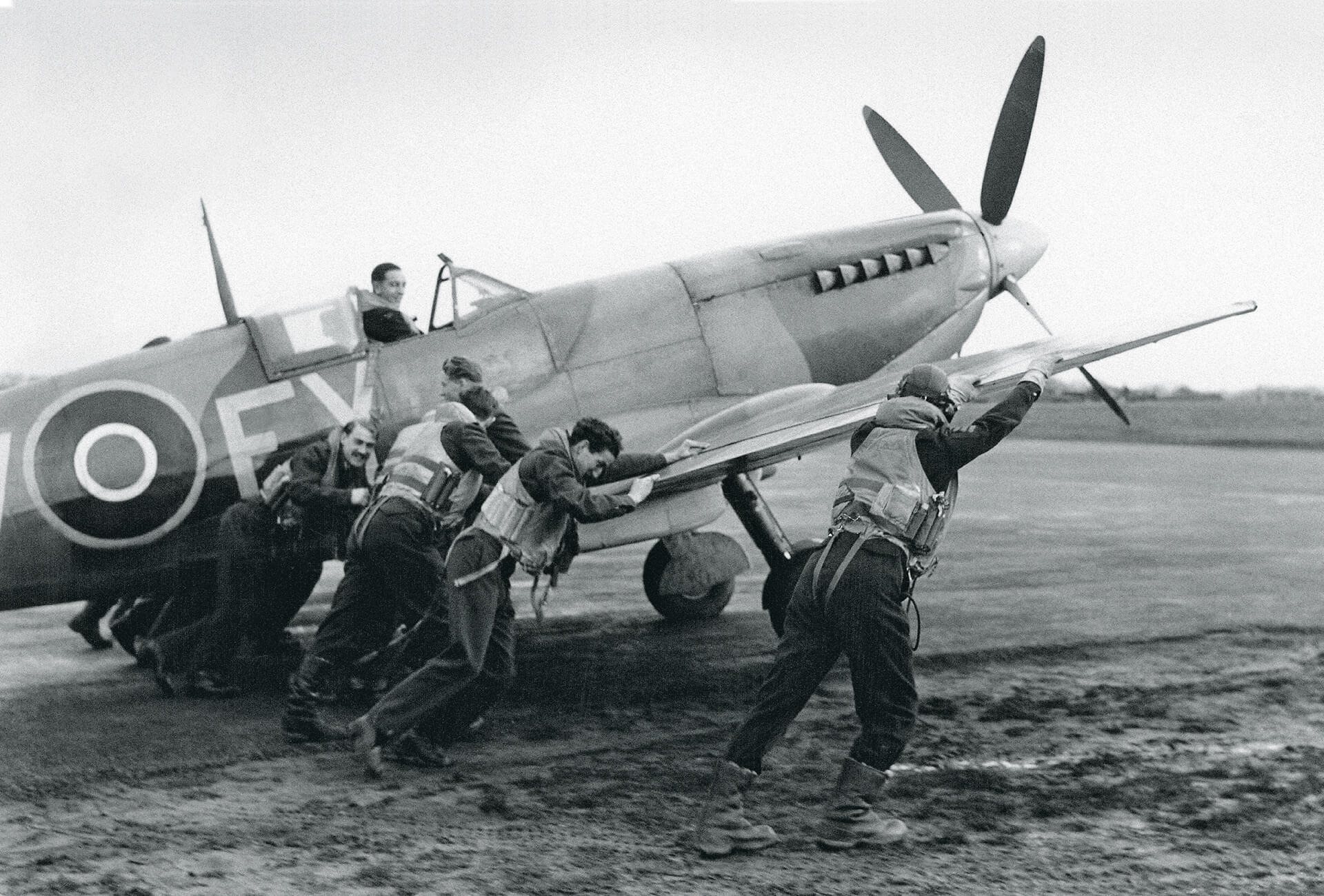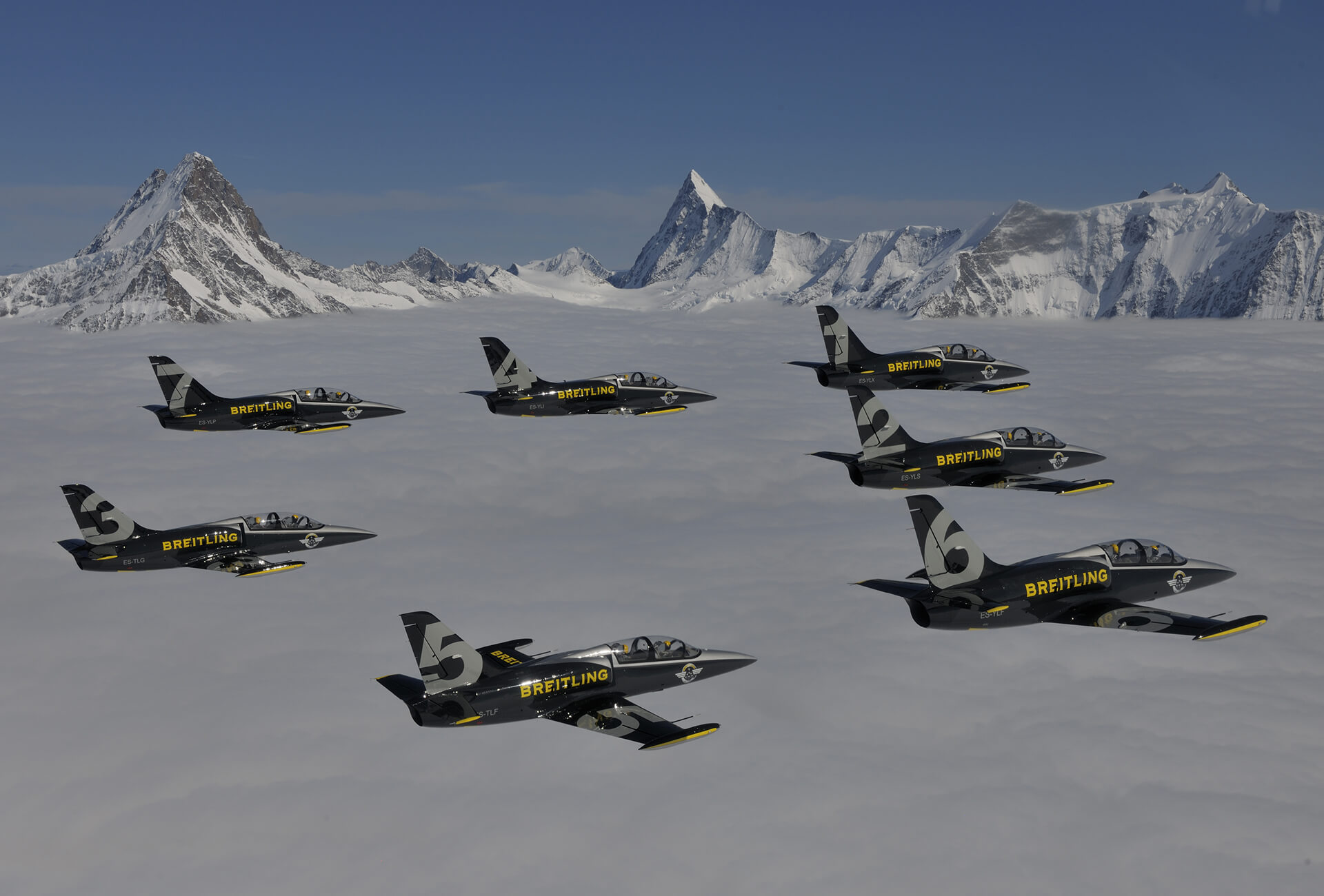Breitling’s invention, in 1932, of the second chrono pusher made timing a much simpler process as it was now possible to stop and, if required, restart the timing process without resetting to zero. While not an additional function per se, Breitling’s innovation did represent a significant improvement in terms of ease of use. So significant, in fact, that numerous other brands produced their version of the double-pusher chronograph as of the following year. Already at the vanguard of aviation watches, Longines was, unsurprisingly, quick to see the benefits to be gained from this invention and adapted its movements accordingly. Working from its 13.33Z calibre, dated 1910 and a favourite of SPAD pilots in particular, in 1936 it produced the fabulous manual-wind 13ZN mechanical chronograph calibre – the first to be equipped with the famous “flyback” function.
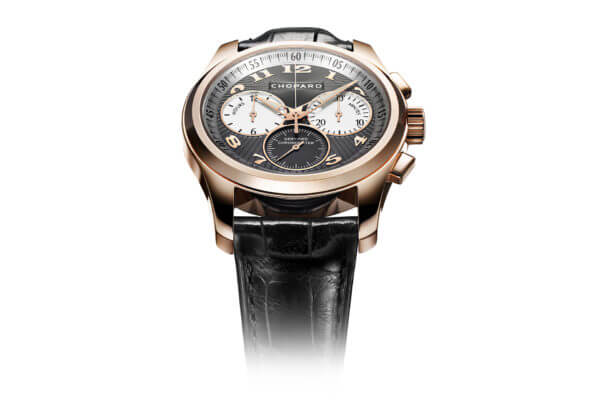
Fight in the air
Militarisation in Europe and particularly Nazi Germany around 1936 prompted the German manufacturer Hanhart to develop its first chronographs as of 1938, followed a year later by new versions, equally robust and efficient, and now with a flyback function. Unusually, the pushers were positioned asymmetrically in relation to the crown – a dissymmetry further accentuated by the fact that one of the pushers is red. Another German brand, Tutima, also made flyback chronos derived from a Hanhart calibre. After the end of the Second World War, Hanhart was confiscated as part of war reparations and offered to the French brand Vixa, which passed up on the German brand’s machines but did take the calibres, which it incorporated into its early 1950s Type 20 chronographs. Easily recognisable, like those of Hanhart and Tutima, the pushers on a Vixa chronograph are asymmetrical to the winding crown.
Vixa was just one of the brands competing to supply France’s air force with manual-wind flyback chronographs: Auricoste, Breguet and Dodane, with subsidiary brands Chronofixe and Airain, were in the running too. Each had to comply with the precise specifications laid out by the Ministry of National Defence and the Armed Forces. These required a robust, dependable chronograph which, in addition to a case diameter of 38 mm, a thickness of 14 mm and a rotating bezel with marker, would include a flyback function. This meant a calibre that could be reset to zero by a single press on the pusher, rather than the usual stop, reset and start sequence.
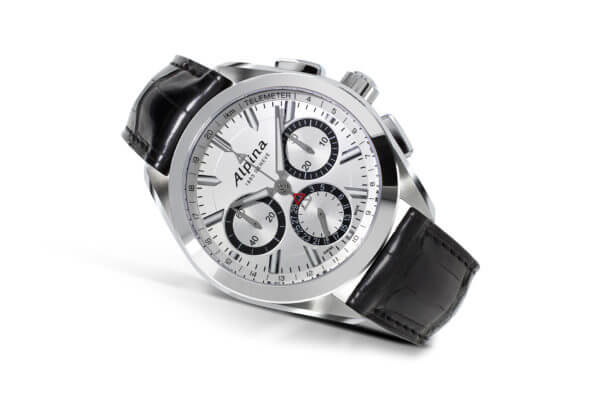
Tools for the military
These instruments would be issued to the pilots of fighter and surveillance planes – anything from a Fouga Magister, a Mirage, a Breguet Atlantique or a Breguet Deux-Ponts to a Super Etendard or a Noratlas – and were therefore required to pass a battery of tests before becoming part of the different army corps’ equipment. Collectors would be satisfied with any one of these watches, now a rare find, although the Breguet name holds particular appeal. These Breguet chronos housed a Valjoux 22 calibre inside a steel case, and were notorious for having a winding stem that snapped the staff for the minute counter hand if the crown was hit front-on. Because of this, in many of these chronos the original wheel has been replaced by reworked components from outside sources.
Dodane was probably the most prolific manufacturer. It produced two batches of 2,000 units of its sturdy and efficient chronos, and around a thousand Type 21. By the late 1950s the brand was in full stride, and as well as its own production had responsibility for servicing all French air force watches. Its own chronos were fitted with Valjoux 22 calibres and later, after the introduction of Type 21 chronos, Valjoux 72C calibres. Specialists agree that of all the Type 20 chronos, Auricoste’s had the finest movement. Two thousand were made, the majority with a chrome/nickel-plated brass case with a snap (no screws) back in steel, although 200 were made with an all-steel case. They housed the Lémania 15TL (Auricoste 2040) calibre. This magnificent and robust movement incorporates an Incabloc shock absorber and a Breguet overcoil balance spring for superior precision. Its simple, ultra-efficient flyback function sailed through tests requiring 300 consecutive starts and stops.
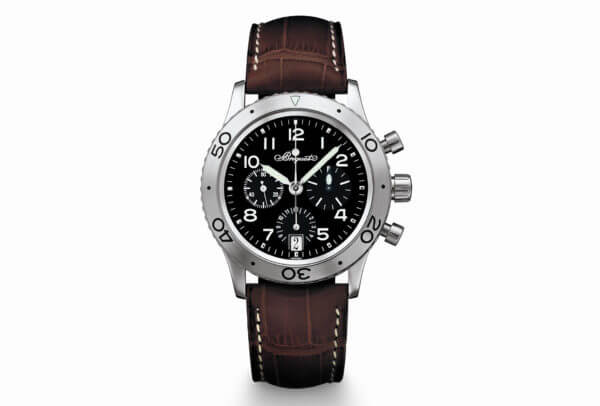
The flyback in brief
The flyback is an additional chronograph function thanks to which the chronograph hand can be reset to zero by pressing once on the pusher at 4 o’clock, without having to first stop the hand using the pusher at 2 o’clock. Back in the days when pilots wore thick sheepskin gloves for protection in unheated, unpressurised cockpits, this ability to operate the chronograph with the least number of pushes was a considerable advantage. This simple yet efficient mechanism disengages the chrono by means of a cam, returns the hand to zero at the same time, and starts timing again as soon as the pusher is released. This meant pilots could wait and restart timing to exactly coincide with a radio-transmitted signal, and therefore calculate their direction with the least possible deviation from the ideal route… with all the benefits one can imagine when flying close to enemy planes. In poor visibility, pilots could also use the flyback function for instrument flight by following course indications to the nearest second.









